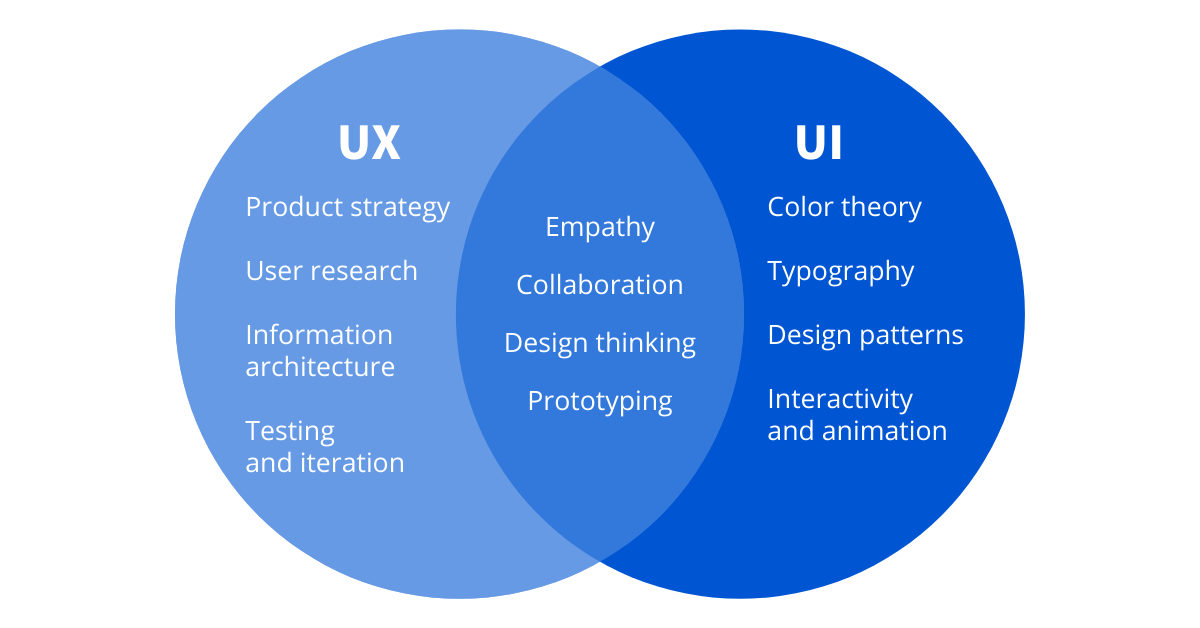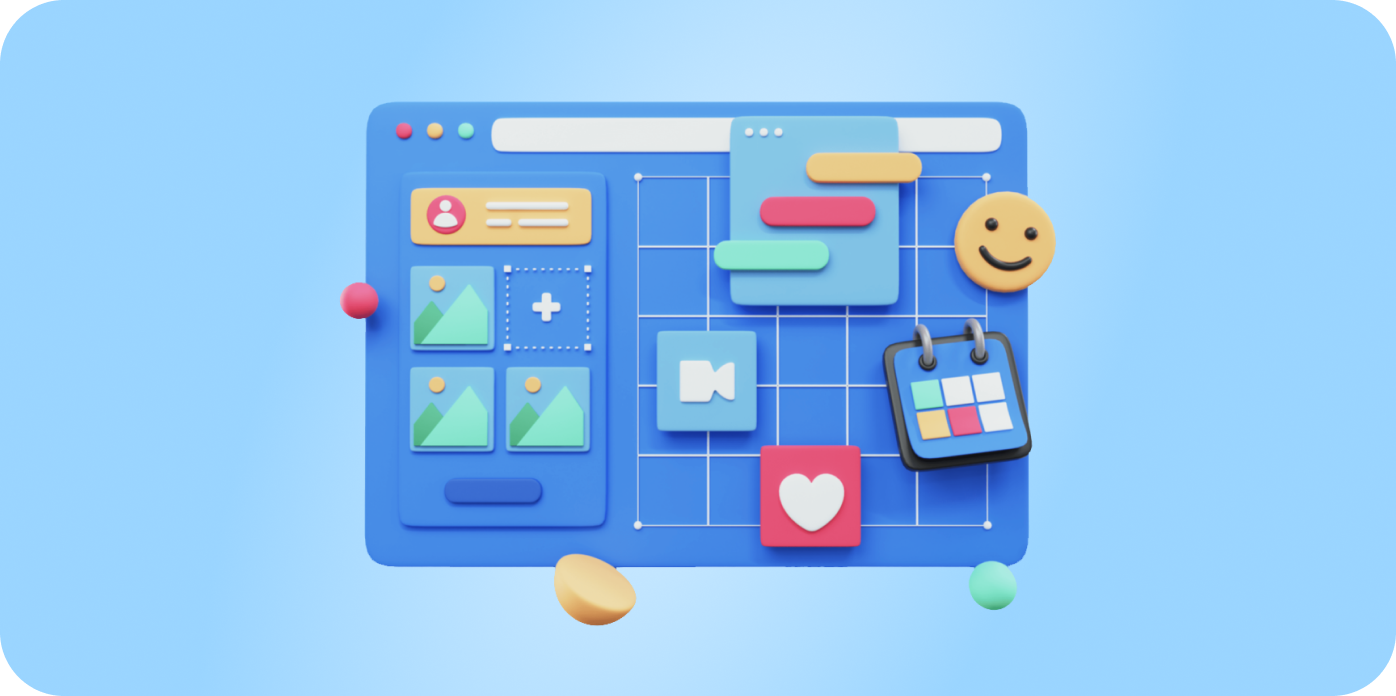You know that feeling when you walk into a store because it looks inviting, but once inside, the experience just doesn’t live up to your expectations? You leave disappointed, and chances are, you never go back.
Now, think about your website. It’s your business’s digital storefront. Customers might find you because you rank high on Google, but will they stay?
Will they return?
According to a study by Neil Patel, 40% of people abandon a website that takes more than 3 seconds to load. Can you afford to lose 40% of your website visitors just because your website took a few extra seconds to load?
Absolutely not! Therefore, website design becomes a crucial differentiating factor.
This is why your website’s UI/UX isn’t just about looks—it directly impacts your bottom line. It’s about keeping visitors engaged, converting them into loyal customers, and boosting your ROI.
Let’s explore how UI/UX design delivers tangible value and why it’s worth every penny of your investment.
UI/UX Design
UI (User Interface) and UX (User Experience) are two terms that often get thrown around interchangeably. But what do they mean?
- User Interface (UI): This is what the user interacts with on a website or app. Think of it as the buttons, icons, spacing, typography, and colour schemes. It’s the look and feel of your digital product.
- User Experience (UX): This is all about the user’s journey through your website or app. How easy is it for them to find what they’re looking for? Is the process of navigating through your site smooth and intuitive?

Why UI Matters?
A well-designed user interface is more than just pretty visuals. It’s about creating an environment that is welcoming and easy to use. It’s like walking into a beautifully decorated store where everything is in its place, and the atmosphere is inviting.
You’re more likely to spend time there, explore, and eventually make a purchase. The same principle applies to digital spaces.
A good UI:
- Grabs Attention: The UI is the first thing a user sees on your website. A clean, attractive design can grab their attention and make a strong first impression.
- Builds Trust: Consistency in design elements like fonts, colours, and spacing can build trust. It shows that your brand pays attention to detail and cares about user experience.
- Enhances Accessibility: Thoughtful UI design ensures your site is accessible to everyone, including people with disabilities. This can expand your audience and show that your brand is inclusive and considerate.
Which UI do you prefer?

The Essence of UX
User Experience goes beyond the surface. It’s about how a user feels when interacting with your site. A great UX ensures the user’s journey is smooth, intuitive, and enjoyable.
It involves understanding user behaviour, anticipating their needs, and providing solutions before they even realise they need them.
A good UX:
- Simplifies Navigation: Users should be able to find what they’re looking for without confusion. Clear navigation paths and intuitive layouts make this possible.
- Speeds Up Tasks: Efficiency is key. Users should be able to accomplish their goals quickly and with minimal effort.
- Creates Enjoyable Interactions: The overall experience should be pleasant. Whether it’s the ease of making a purchase, finding information, or interacting with customer service, every touchpoint should leave a positive impression.
Return on Investment (ROI) of UI/UX Design
Good UI/UX design sets businesses apart. But what’s the real value of investing in quality design?
UI/UX design affects business results in ways we can’t measure. It leads to happier customers, more sales, lower costs, and a better brand image, which in turn contributes to a strong return on investment (ROI).
1. Increased Customer Satisfaction
Did you know that, according to Sweor, 38% of people will abandon a website if it’s unattractive? Customers appreciate a well-designed website.
When a site is easy to navigate, visually appealing, and intuitive, users are more likely to have a positive experience. This satisfaction translates into repeat business and loyalty.
- Ease of Use: A well-designed UI/UX ensures that users can easily find what they are looking for without frustration. This positive experience makes them more likely to return to your site.
- Positive Emotional Response: Good design evokes positive emotions, making users feel valued and understood. This emotional connection encourages repeat visits and fosters loyalty.
2. Reduced Development Costs
Investing in UI/UX design early in the development process can save money in the long run. A well-thought-out design reduces the need for costly redesigns and fixes after launch. It’s about getting it right the first time.
- Early Problem Detection: Investing in UI/UX design helps identify potential issues early in development. This proactive approach reduces the likelihood of costly errors and redesigns later on.
- Efficient Development: Clear and well-documented UI/UX design specifications streamline the development process. Developers have a clear roadmap, reducing time spent on guesswork and rework.
3. Higher Conversion Rates
According to a study by Neil Patel, a mere one-second delay in page load time can reduce conversions by 7%.
A well-designed website leads to higher conversion rates. When users find it easy to navigate and visually appealing, they are more likely to take the desired action, whether purchasing a product, filling out a form, or clicking on an ad.
- Simplified User Journey: Effective UI/UX design simplifies the user journey, reducing friction points that can hinder conversions: clear calls-to-action (CTAs) and intuitive navigation guide users towards completing desired actions.
- A/B Testing: UI/UX design often involves A/B testing different design elements to see which versions yield higher conversion rates. This data-driven approach ensures continuous improvement and optimisation.
4. Lower Bounce Rates
Good UI/UX has reduced bounce rates by 34%.
A good UI/UX design ensures users stay on your site longer. They don’t bounce off after a few seconds because the experience is pleasant and engaging. This increased dwell time can positively impact your site’s SEO ranking.
- Engaging Content Layout: Thoughtful UI/UX design includes engaging content layouts that keep users interested and encourage them to explore further.
- Improved Load Times: Optimized UI/UX design reduces page load times, minimising bounce rates caused by slow-loading pages.
5. Improved Brand Perception
Your website is often the first point of contact with potential customers. A well-designed site enhances your brand’s perception and credibility. It shows you care about your customers’ experience, which builds trust and confidence.
- Consistent Branding: Effective UI/UX design ensures your website aligns with your brand’s visual identity and messaging. Consistency across all touchpoints builds brand recognition and trust.
A great example of amazing and consistent UI/UX design is Duolingo. Duolingo’s consistent use of colors, icons, and playful tone across all touchpoints builds strong brand recognition and trust.

- Professional Appearance: A polished and professional website design conveys reliability and competence. Users are more likely to trust a brand that invests in its digital presence.
But How Do I calculate the ROI of UI/UX through such metrics?
Calculating the ROI of UI/UX design involves assessing various metrics that reflect improvements in user experience and translating them into key performance indicators (KPIs) that matter to your organisation.
Here’s how you can do it:
Step 1: Identify Relevant Metrics
Start by choosing metrics that will help you track progress and improvements. These metrics should align with the aspects of user experience you aim to enhance:
- User Surveys: Gather data on user satisfaction, ease of use, and perceived usability.
- Web Analytics: Monitor return visit frequency, feature utilisation, new account creation, conversion rates, abandonment rates, and error counts.
For example, in Google Analytics 4 (GA4), conversions are grouped under Events, with significant conversions labelled “Key Events.” This allows you to track these metrics effectively.

- Usability Testing: Evaluate success rates, time to complete tasks, errors, and productivity during user testing sessions.
- Customer Support Metrics: Track the number of support tickets, calls, chats, emails, training hours required, and the volume of user complaints.
Step 2: Link Metrics to Business KPIs
Translate your chosen metrics into KPIs that reflect business outcomes. Consider what aspects are most crucial for your organisation’s success, such as:
- Cost Savings: Calculate support costs, development rework, and training expense reductions.
- Revenue Growth: Measure increases in customer acquisition, retention, and overall sales.
- Customer Lifetime Value: Assess how improved user experience affects the long-term value of customers.
- Operational Efficiency: Evaluate changes in employee productivity and turnover rates.
Step 3: Quantify the Impact
Convert your metrics into tangible business value. For instance, if you reduce support tickets by improving the registration process, quantify the cost savings from fewer support interactions:
- Calculate Savings: Determine the cost associated with handling each support ticket and multiply it by the reduction in ticket volume.
- Assess Revenue Impact: If the improved registration process leads to more completed sign-ups, calculate the additional revenue generated from these new users.
- Project Long-term Benefits: To capture their full value, estimate the cumulative impact of these improvements for 2 to 5 years.
When calculating ROI, consider both immediate and long-term effects. Immediate benefits might include cost savings and increased conversions, while long-term benefits could involve enhanced brand perception, customer loyalty, and higher lifetime value.
Conclusion
Investing in UI/UX design is more than just making your website look good. It’s about creating a seamless, enjoyable experience for your users. This investment leads to higher customer satisfaction, increased conversion rates, and a better bottom line.
So, don’t wait any longer. Make UI/UX design a priority for your business and watch its positive impact on your ROI.
Your customers deserve the best, and so does your business. Invest in UI/UX design today and reap the benefits tomorrow.






